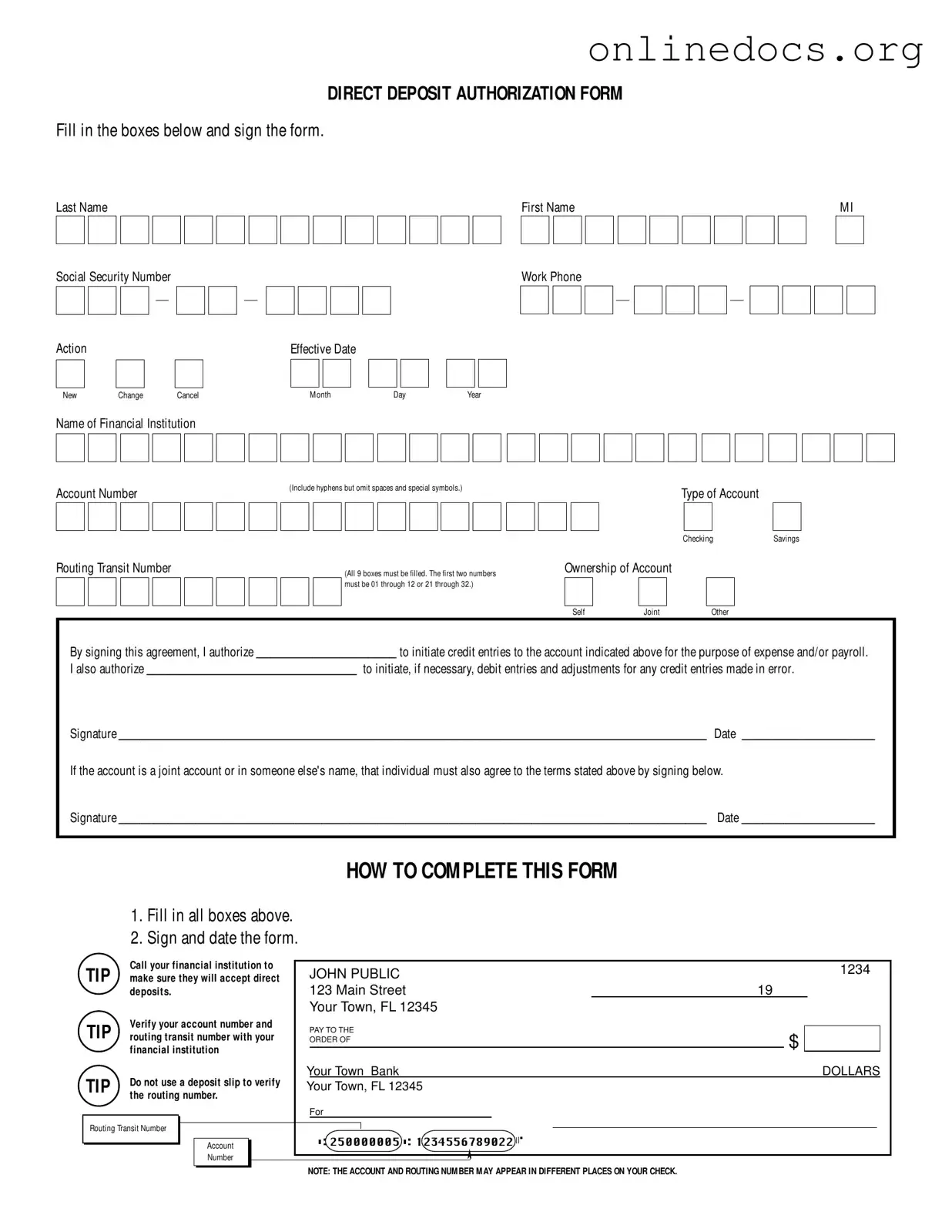The W-4 form, officially known as the Employee's Withholding Certificate, serves a similar purpose to the Generic Direct Deposit form in that it is essential for managing employee payroll. Both documents require personal information, such as the employee's name and Social Security number. The W-4 form allows employees to indicate their tax withholding preferences, which directly affects their take-home pay. Just as the direct deposit form authorizes the transfer of funds to a bank account, the W-4 informs employers how much tax to withhold from each paycheck, thereby influencing the overall financial management of the employee.
The I-9 form, or Employment Eligibility Verification, is another important document that parallels the Generic Direct Deposit form in its role within the employment process. While the direct deposit form focuses on the financial aspect of employment, the I-9 ensures that the employee is legally authorized to work in the United States. Both forms require the employee to provide identifying information, and both must be completed accurately to avoid complications. The I-9 form serves as a safeguard for employers, ensuring compliance with immigration laws, just as the direct deposit form ensures that employees receive their wages in a timely manner.
When managing the complexities of vehicle transactions, it is vital to utilize a comprehensive tool like the Vehicle Purchase Agreement form. This form clarifies the obligations of both the buyer and seller, thus minimizing potential disputes. To better understand how to proceed with a vehicle sale, you can access the necessary documentation by following this link: https://californiapdfforms.com/vehicle-purchase-agreement-form/.
The ACH Authorization form, used for automatic bank transfers, closely resembles the Generic Direct Deposit form in its function of facilitating electronic payments. Like the direct deposit form, the ACH Authorization form requires the account holder's banking details, including the account and routing numbers. Both documents authorize a financial institution to process transactions on behalf of the account holder. This similarity highlights the importance of secure and efficient payment methods in managing personal finances and payroll systems.
The Payroll Deduction Authorization form is also akin to the Generic Direct Deposit form, as it outlines how an employee's wages will be allocated for various purposes. This form allows employees to authorize deductions for benefits, retirement accounts, or other financial obligations. Just as the direct deposit form specifies where funds will be deposited, the Payroll Deduction Authorization form details how much will be deducted and for what purpose. Both forms require signatures to validate the employee's consent and ensure that the employer adheres to the employee's financial preferences.
The Bank Account Verification form serves a similar function to the Generic Direct Deposit form by confirming the accuracy of an employee's banking information. This document is often required by employers to ensure that the account details provided for direct deposit are correct. Both forms necessitate the inclusion of sensitive banking information, such as account and routing numbers. By verifying this information, employers can prevent errors in payroll processing, ensuring that employees receive their funds without delay.
The Employment Contract may also be compared to the Generic Direct Deposit form in terms of its role in defining the financial relationship between an employer and employee. While the direct deposit form focuses on the method of payment, the Employment Contract outlines the terms of employment, including salary and payment frequency. Both documents are crucial in establishing clear expectations regarding compensation. The Employment Contract may reference direct deposit as the method of payment, emphasizing the importance of both documents in facilitating a smooth employment experience.
